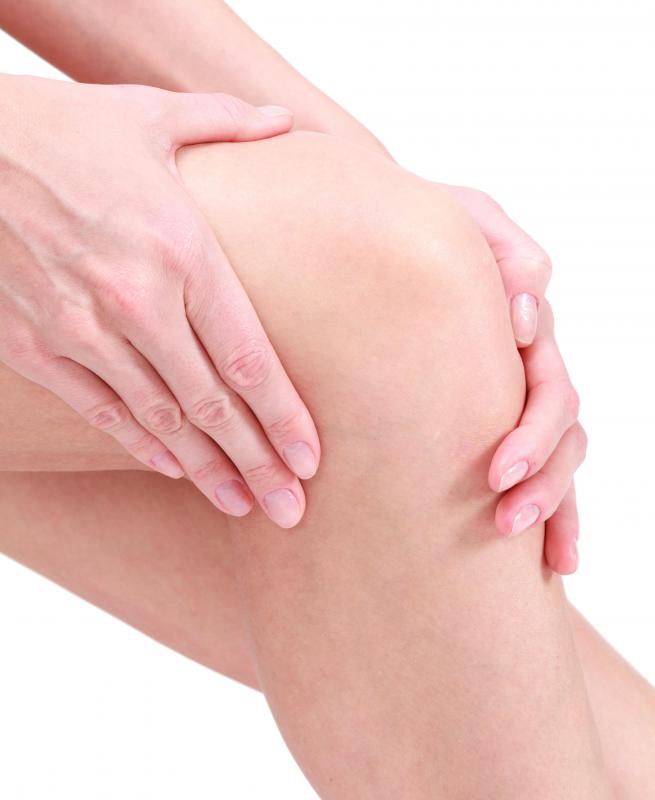At TheHealthBoard, we're committed to delivering accurate, trustworthy information. Our expert-authored content is rigorously fact-checked and sourced from credible authorities. Discover how we uphold the highest standards in providing you with reliable knowledge.
What is Knee Arthrodesis?
Knee arthrodesis is a relatively uncommon type of surgical procedure in which the knee joint is fused into a single, immobile unit. This kind of joint fusion may be carried out when infections or tumors of the knee have destroyed joint tissue, but it is most often used when an artificial knee joint replacement has failed. A successful arthrodesis gives the knee stability and relieves pain, but has the disadvantage that the joint is no longer flexible. For this reason, knee arthrodesis is normally carried out on only one knee, in order to keep the patient mobile.
Failed total knee replacements are the main reason for carrying out a knee arthrodesis. Other people who may benefit from knee arthrodesis include those who are young and involved in heavy physical work of some kind. This is because an arthrodesis is more likely to last and endure than replacement joints, which may fail in the future, requiring further knee surgery.

A knee arthrodesis operation involves preparing and trimming the ends of the bones that make up the knee joint, so that they will fuse together at the correct angle. Normally, the knee is positioned so that it is very slightly bent and turned outwards from the midline. Pieces of bone tissue, called bone grafts, are placed in and around the joint to encourage healing and fusion. Sometimes metal pins are set into the bones and fixed to a metal frame worn outside the body. This is known as external fixation, and serves to hold the bones in place until fusion occurs, when the frame and pins are removed.

In another type of joint surgery, knee arthrodesis is carried out by fixing the bones together internally using nails. This is known as intramedullary nailing, and the nails remain inside the body. A third technique, called plate fixation, uses metal plates to hold the bones together.
The most frequent complication associated with knee arthrodesis is when the bones fail to fuse. Sometimes infection occurs, or the bones or metal fixings may break. The leg may also be shorter following surgery.

Occasionally, after arthrodesis, a person may experience pain in the lower back, and in the hip and ankle on the same side as the fused joint. Pain may also arise in the opposite knee, ankle and hip. The outlook for knee arthrodesis depends on the method used and the reason for surgery, but in around 80 percent of cases, fusion is successful and takes place within six months.
AS FEATURED ON:
AS FEATURED ON:














Discussion Comments
@Clairdelune - I know that knee arthrodesis doesn't sound very inviting after having a knee replacement that didn't last very long. But think of the alternative - a lot of pain and loss of function.
I also have knee osteoarthritis. I have read a few promising reports about a research study on mice that are able to regenerate their cartilage after their knee was injured or worn down from overuse. They are hoping to find out why these mice can repair cartilage and to find a way for humans to do the same.
Knee arthrodesis is kind of a scary thought. I have the beginnings of knee arthritis and probably some day I will have to have a knee replacement surgery. I don't know what the statistics are on the failure of knee replacements.
But if knee replacements don't hold up, it seems that about the only alternative is to have the bones of your knee joints fused together. That doesn't sound too good because you wouldn't be able to bend your knee or move very well. The other alternatives, having the bones nailed together or fastened with plates don't sound too good either.
I hope by the time I need a knee replacement, the scientists have figured out a less invasive way to fix worn out knees.
Post your comments